- A Special Wedding in the “Special Period”
 Read more
Read moreLike all weddings, this one involved meticulous planning. Unlike similar celebrations across Latin America, it also reflected the unique realities of Cuba’s Special Period. When the Soviet Union vanished several years earlier, all commercial products disappeared from government rations. Once ...
- Signing Cuba’s 1976 Family Code
 Read more
Read moreThe bride, her mother-in-law and guests look on in this picture as the groom signs Cuba’s Family Code, a culminating moment in all island weddings since the mid-1970s. Passed in 1976, the Family Code responded to Fidel Castro’s admission two ...
- Old-Fashioned Cuban Panetela
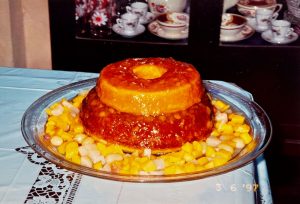 Read more
Read moreA homemade example of a traditional Cuban-style pound cake, this panetela was made with two of the greatest luxuries in the Cuban diet during the Special Period: milk and butter. I also coated and decorated with a food item whose ...
- The Street Sign as Historic Witness
 Read more
Read moreOf the four signs legible to passersby on Calle Belascoaín, a main thoroughfare of Centro Habana, when I took this picture in 1995, only one advertised for a still-functioning business: the rest (including a flower shop and record store) had ...
- The Missing Eagle
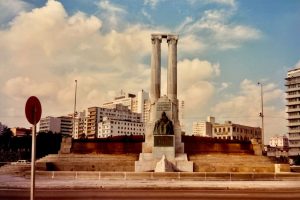 Read more
Read moreWhen the adoption of socialism elevated the Cuban Communist Party to the pinnacle of power in 1961, its leaders acted to remap the landscape of memory and history in Havana by removing, defacing, or destroying its most iconic, Republic-era monuments ...
- Faces of Revolution
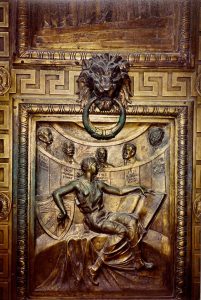 Read more
Read moreIn 1995, when I first visited Cuba, the door to the Capitol building, constructed by the regime of President Gerardo Machado (1925-1933), still showed the evidence of public outrage over his betrayal of the Republic and democracy. Literally defaced by ...
- Cuba’s Capitol Building amidst Post-Soviet Crisis
 Read more
Read moreOnce Fidel Castro shelved elections and representative democracy, what had once been an aspirational symbol of government accountability, the home of Cuba’s Senate and House of Representatives, became a museum. When I first visited Cuba for a month in June ...
- Uncle Tiki’s Polki
 Read more
Read moreNicknamed “la aspirina” by Cubans, this teeny-tiny car manufactured in Soviet-controlled Poland was more formally called El Polki. Stick shift and extremely fuel efficient, Tiki’s Polki had been a reward granted to my grandmother, Aurora Almirall, in 1963 on the ...
- Mingo gets the job done
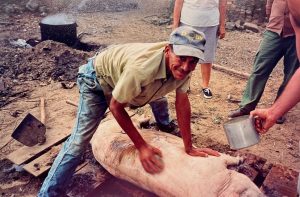 Read more
Read morePerhaps one of the greatest skills a man can learn in Cuba is how to kill (or as peasants used to say, sacrifice) a pig without cruelty or suffering on the part of the pig. When I was growing up ...
- REAL Chicharrones
 Read more
Read moreIn Pinar del Río, when my uncle’s family sacrificed a pig, all those who showed up to help chop up and fry its considerably thick layer of fat into odd-sized squares got to keep a portion. Raised on palmiche, the ...
- Casa de Margot, frozen in time
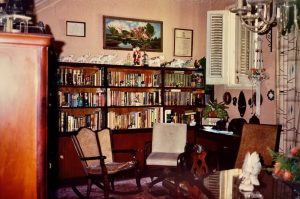 Read more
Read moreWhen I went to Cuba for the first time in the summer of 1995, I assumed that the story of Cubans who lived in virtually the same environment as they did in 1959 was a fiction or myth. Boy, was ...
- Communist “Monopoly”?!
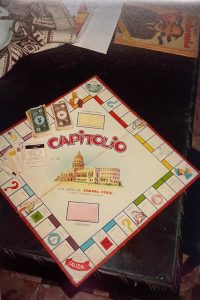 Read more
Read moreAt the time of the Cuban Revolution of 1959, most average Cubans were deeply critical of the United States’ support for military dictatorships (like Cuba’s own under Fulgencio Batista) as well as monopoly capitalism. Yet Cubans were also enamored of ...
- Going to the Beach, Cuban-style
 Read more
Read moreAs anyone who has lived with Cubans outside of the political elite can attest, two “basic” items most lacking—from the 1970s to the present—are towels (of any kind) and napkins. In fact, I only discovered I was a sloppy eater ...
- “HERE ANY TOURIST IS FREER THEN WE ARE”
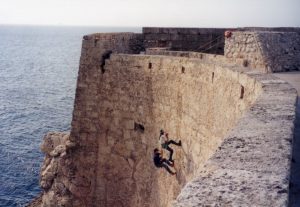 Read more
Read moreAs happens in most majority-poor countries dominated by authoritarian regimes, foreigners in Cuba often enjoy far more freedom than local citizens. To anyone familiar with Fidel Castro’s prior claims to have created the most anti-imperialist, socially just, and therefore “freest” ...
- THE SHOES OF DON TOMÁS
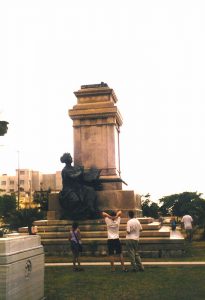 Read more
Read moreOn a single night in 1961, the Cuban Communist Party carried out a “lightning operation” that physically removed all evidence from Havana’s iconic monuments of what leaders considered Cuba’s imperialist past. Famous examples included the toppling of the massive brass ...
- THE MYTH OF CUBA’S GRATEFUL INDIAN
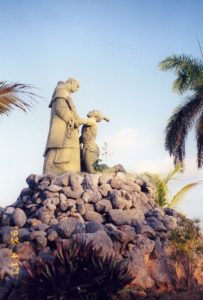 Read more
Read moreWhether applied to its native people or the descendants of enslaved Africans, a long-standing fiction survives in Cuba that non-whites were deeply grateful to individual whites, as this monument argues, or whites in general, for having “saved them” from either ...
- 100 SHADES OF BROWN
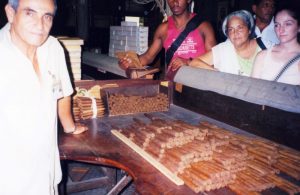 Read more
Read moreAs the granddaughter of Agustín Guerra, an orphan who worked as a field hand until he could establish a tobacco farm of his own in the 1920s, I confess to loving Cuba’s exquisite cigars—even though my father, Agustín’s son, cringed ...
- “ART IS A WEAPON OF THE REVOLUTION”
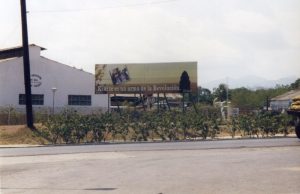 Read more
Read moreFirst announced by Fidel Castro in 1967, what might have been a mere off-the-cuff remark in any other context quickly became a decades-long policy and slogan that demanded adherence from all artists, writers, and cultural workers. Left up to the ...
- An Enslaved Mason’s Ingenuity
 Read more
Read moreIn June 2001, my students and I visited El Ingenio Carolina, a sugar plantation founded in 1835 by slave-owner and foreign investor William Hood Clemens. Fancying the use of an enslaved labor force a premier example of American ingenuity, Hood ...
- Unleashing Love for Dogs
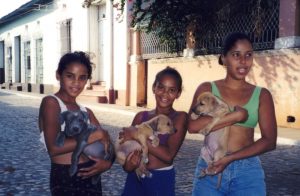 Read more
Read moreEncountering Cubans out for a stroll with their unleashed (and not always friendly) dogs remains a hallmark of my many visits to Cuba in the 1990s. The proud owner of twin Chinese pugs myself, I could not fathom how I ...
- Forgotten Origins of Wifredo Lam
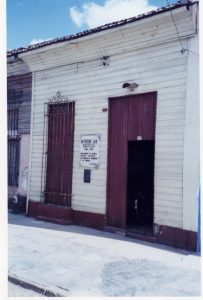 Read more
Read moreFew admirers of the world-famous surreal, modern art of Wifredo Lam (1902-1982) have visited his impoverished childhood home, just a block from the central plaza of Sagua la Grande, a once prosperous provincial city. When I made the journey in ...
- Real or Fake?
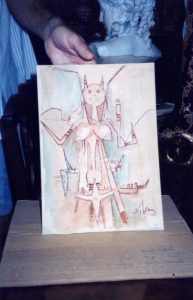 Read more
Read moreAs often happened during the Special Period (and, to a certain extent, continues even today), towns, historical sites, and cities like Sagua la Grande that prove off-the-beaten-path for most tourists brimmed with antiques and curiosities that local people often happily ...
- Casino Chong Gua
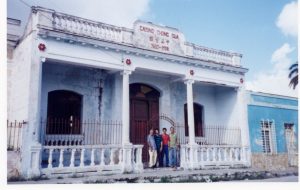 Read more
Read moreFor nearly three decades, slave-owning planters had supplemented their enslaved labor force with Chinese indentured servants. However, the use of the term “servant” and the conditions of their contracts proved to be lies. Deceived into traveling to Cuba for what ...
- Dupont Mansion at Varadero
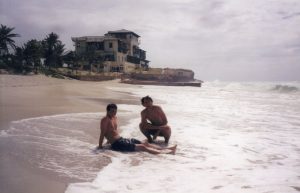 Read more
Read moreIn recent years, this once pristine area of Varadero Beach has been overrun by the Cuban government’s joint venture schemes with China to develop luxury rentals and even a golf course next to the shoreline. When I first visited, however, ...
- RELIC OF THE PAST?
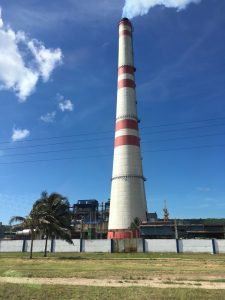 Read more
Read moreIn the 1940s and early 1950s, during Cuba’s short-lived democratic age, Cuban sugar workers achieved major labor demands from an elected government. These included not only the legalization of negotiated union contracts but also government mediation of strikes. For permanent ...
- HOW TO MAKE A HERO OUT OF A SLAVE OWNER
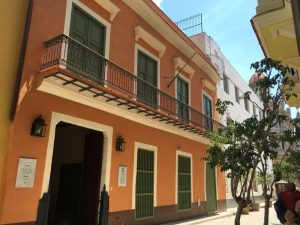 Read more
Read moreIn Cuba, as elsewhere, the invisibility of sugar’s labor-intensive production was always intrinsic to the profits driven first by slaves and later by an underpaid and overly exploited workforce. However, no other sugar island consumed more human lives through the ...
- Better than Bulgarian
 Read more
Read moreLike most Cubans, my elderly cousins Teresita and Pilar remembered how they had once taken for granted the centrality of products from Spain to Cuban cuisine—such as olives or cumin—before what they abstractly called “El Desastre” . Wine, however, ...
- Begging for rides
 Read more
Read morePerhaps the most common sight of the Special Period was that of Cubans standing or sitting for hours alongside city streets and highways, waiting for someone to give them a ride. Most cared little about the conditions. They were often ...
- The Ingenio Brunet
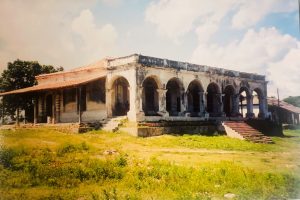 Read more
Read moreUnlike Southern planters in the United States, Cuba’s “sugarocratic” elite of the eighteenth and nineteenth century considered living too close to the source of their wealth—that is, the daily violence reaped on slaves in sugar plantations—was demeaning. The German-Cuban Brunet ...
- El Valle de los Ingenios [The Valley of the Sugarmills]
![El Valle de los Ingenios [The Valley of the Sugarmills]](https://cubanstudies.history.ufl.edu/wp-content/uploads/sites/173/4-Valle-de-los-Ingenios-Resized-300x193.jpg) Read more
Read moreA reference to the industrial nature of sugar production that arose from the late eighteenth to the mid-nineteenth centuries, the central lowlands of Cuba generated wealth for slave-owning planters on a scale that rivaled the monarchs of Europe. In ...